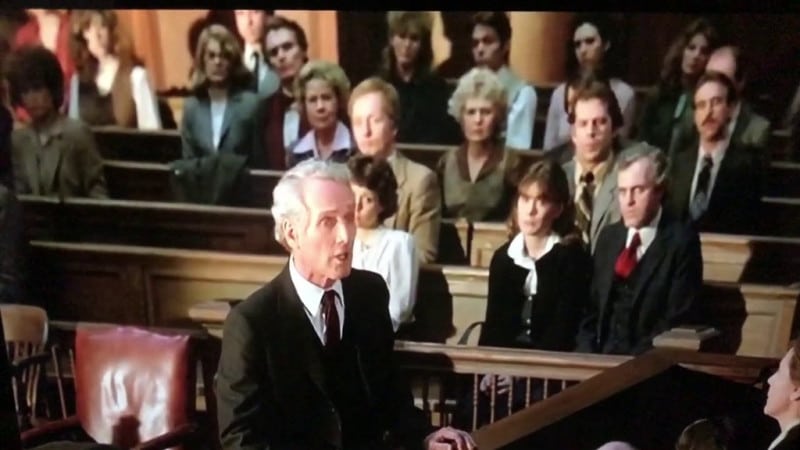
[Missed Part 1? Find it here]
When it comes to sequence, think in terms of Three Act Structure:
- A Beginning,
- A Middle, and
- An End.
Or more descriptively:
- A Determinative Origin
- A Causal Playing Out of Decisions and Consequences, along with
- An Emotionally Meaningful Conclusion
And the wonderful thing about Three Act Structure is that it’s fractal in nature.
Not only does every proper story have three acts, but each act within that story will make use of three act structure. And every sequence with each act. As well as every scene within each sequence. And so on.
It’s “turtles all the way down,” gentle reader.
But here’s what few people will ever tell you about three act structure…
3-Act Structure Parallels Aristotle’s 3 Persuasive Appeals
Skeptical? Check it out:
Ethos = First Act
Herein we are introduced to the main character along with his aspirations, values, and challenges or conflicts.
Logos = Second Act
Herein we get a causal — aka, a logical — playing out of decisions, actions, and consequences.
Pathos = Third Act
Herein we get the high drama of the heightened emotional climax along with the meaningful dénouement providing the lasting emotional “base notes” of the story.
That’s the sequence.
And just like three act structure, this sequence is fractal.
Also, to bring this back to our original “Right Stuff” trinity:
Ethos = Bonding
Logos = Differentiation
And Distinctiveness is its own beast, omnipresent within your branding and marketing.
While Pathos builds organically from Ethos and Logos.
When you go for pathos without first establishing ethos and logos, it falls flat or feels manipulative.
Think of it like telling the punchline without first delivering the set-up, then expecting the audience to laugh.
What Lawyers Know About Persuasive Sequencing That You Don’t
Lawyers know that court cases follow this Ethos-Logos-Pathos sequence. And on a fractal basis, at that.
First, you introduce the characters. Who did what to whom?
Then you introduce the evidence and make your logically and legally sound case.
And since the evidence typically involves expert testimony and/or eyewitnesses, the sequence recapitulates, wherein the experts and witnesses introduce themselves and their bona fides, provide their “arguments,” and make their (emotionally charged) conclusions.
Finally, you make your closing arguments, wherein you go for broke with emotion and the larger meanings.
And since the Ethos-Logos-Pathos pattern is fractal, closing arguments — though focused on Pathos — will begin with Ethos (usually centered on the jury’s character), and eventually build from there into emotion and the grander meaning of the trial.
Just check out this closing argument from The Verdict to see this in action:
So… knowing that, how should you sequence your ad campaign?
Start with Ethos
Let everything flow from character, to include your brand voice, choice of music beds, brandable chunks, sonic cues, color scheme, etc.
Now, in reconciling and aligning everything to character, you may have some legacy choices to deal with — and that’s where a great advertising “chef” really distinguishes himself.
Figuring out what legacy items to keep as is, what to keep but freshen and modify, and what to ditch is a skill born of deep experience. It’s why it pays to have someone on your branding team who’s been doing this for a decade or two or three.
But the point is: Ethos is the starting point and the foundation.
And going back to our original trinity of “Right Stuff,” Ethos = Bonding
Old-School Branding focused on reason-why advertising, aka Logos.
Modern Branding focuses on Distinctiveness.
But great branding harnesses the power of both while adding in the power of bonding.
And nothing jump-starts bonding like telling (or even re-telling) your Origin Story.
Just understand that your origin story might be longer than one ad. You might have 5 ads all aimed at introducing and building your ethos.
After that, you can lean a bit heavier on the reason-why (aka Logos-based) ads.
Finally, after you’ve been on the air a bit, you can go for broke with pathos.
Just remember that this Ethos-Logos-Pathos structure is fractal — so, yes, you will be establishing some emotional and perspective-based logic when telling your origin story.
And, yes, your origin story ought to end on an emotional note.
But the thrust of a good origin story is establishing ethos.
Have you told your origin story yet?
Have you told it powerfully?
- Getting a Foot in the Door — Of Perception - November 27, 2025
- What Digital Superstars Know About Offline Advertising - November 17, 2025
- Unmistakable: A Tale of Two Boots and Branding Done Right - November 8, 2025
